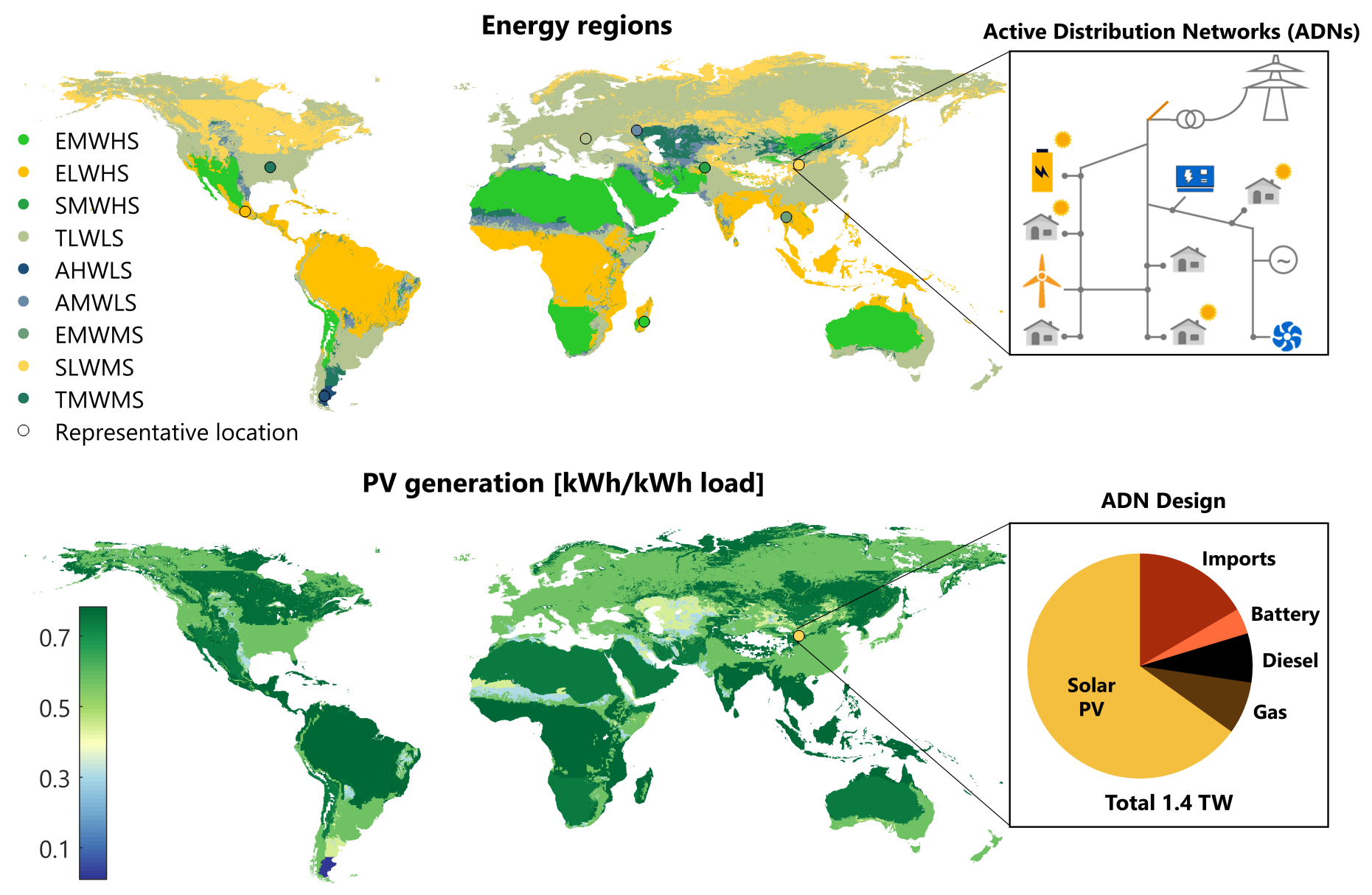Transition Optimisation to Active Distribution Grids
Contacts: Prof. Giovanni Sansavini
The anticipated changes in distribution grids stemming from distributed generation, electric vehicles and other new technologies are associated with large uncertainties for distribution system operators, as flows within their networks could change profoundly over the next decades. Therefore, we investigate optimal ADN transition options and their sensitivity for different techno-economic boundary conditions, reliability and greenhouse gas emission targets.

Upper panel: The world is clustered into energy regions based on climate zone (Equatorial (E), Snow (S), Temperate (T), Arid (A)), wind and solar potential (Low (L), Medium (M), High (H)) using the power demand, solar and wind profiles of representative locations. Active Distribution Networks (ADN) are designed via optimization at each location minimizing the annualized costs with constraints on total emissions and supply reliability. ADN supply electricity to the end-users via local conversion technologies and imports from the national grid. Uncertainty analysis captures the effects of the variability of the most influential model parameters on the AND design. Lower panel: The median solar PV generation in the ADN per unit power demand shows that solar PV is largely exploited in regions with high solar potential, thus requiring the installation of limited volumes of devices. Remarkably, solar PV is deployed in local ADN also in regions with low/medium solar potential and irrespective of the wind potential.